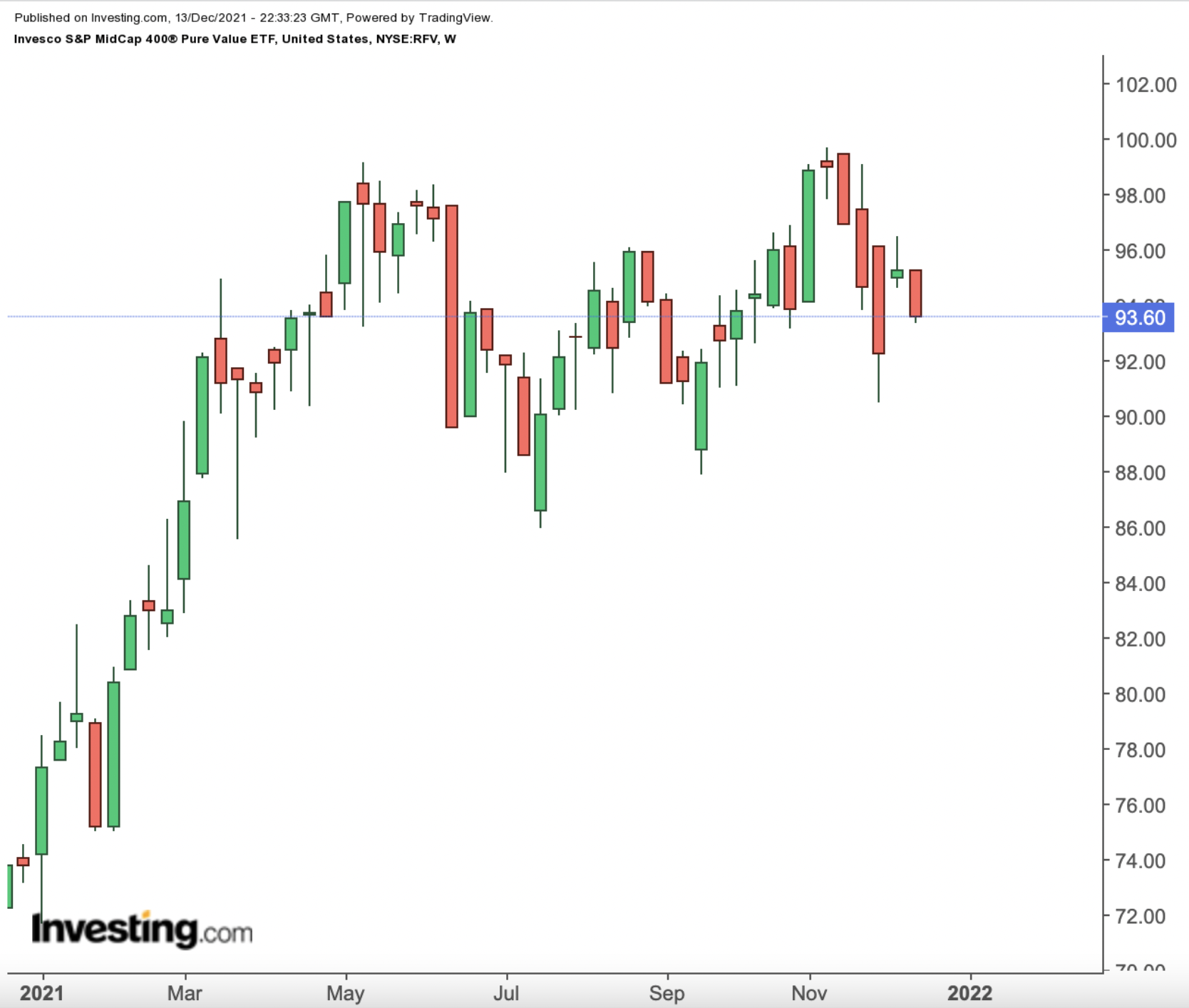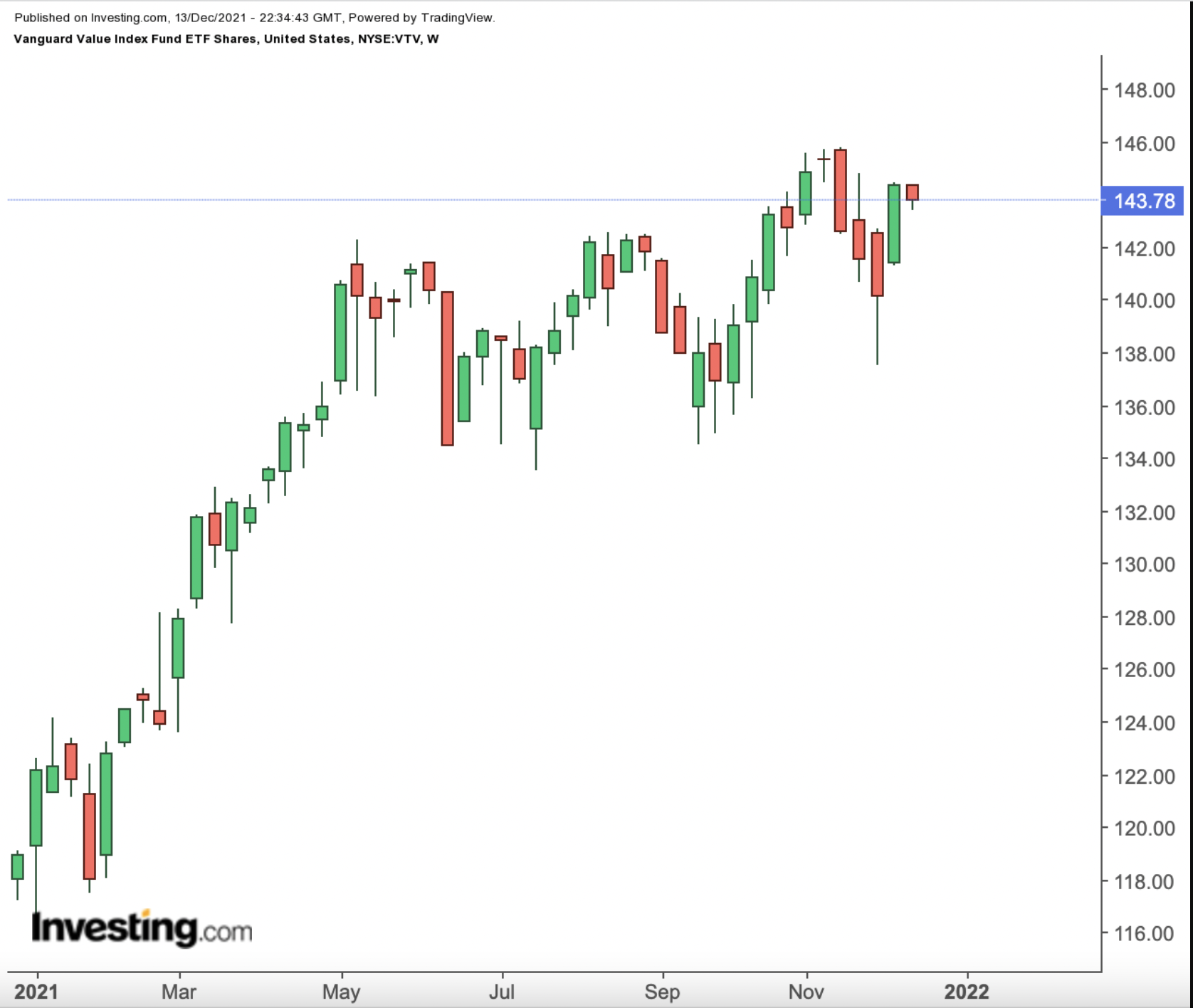Wall Street has been paying attention to the “reflation trade,” a term that has been used somewhat loosely in 2021. Reflation policies typically follow a period of economic contraction. Economists highlight:
“Monetary easing via central banks is one method, the other is fiscal stimulus and increased spending from governments, both trying to halt deflationary pressures and lift the economy.”
Stimulating the economy by investing in jobs and infrastructure as well as specific policies by the Federal Reserve, like quantitative easing, have been efforts to reflate the U.S. economy. Since the start of the pandemic in 2020, many other countries have taken similar steps to get their deflated economies reflated and working well again.
When inflation follows after a bottom in the economic cycle, we have reflation as depressed prices begin to recover. In addition, we see employment as well as wage growth. Therefore, a reflation trade is the view that certain segments of the market should perform better as the economy starts to recover and “normalize.”
Wall Street has been debating which industries and stocks should benefit the most if the reflation trade holds in the coming weeks. The expectation is that value stocks as well as commodities, miners, financials, real estate and infrastructure names should do well.
For instance, private equity giant KKR & Co suggests:
“Buy price makers, avoid price takers…. [W]e suggest overweight positions in infrastructure, real estate and asset-based finance… In terms of global equities, we are overweight Europe, Japan, small- to mid-cap stocks in the U.S., and select Emerging Markets.”
KKR also points out that investors should avoid “popular stocks with rich valuations… [W]e still see many of the most popular growth stocks not doing as well.”
Understandably, not everyone on Wall Street will necessarily agree with KKR’s views. And that difference in opinion is what makes a dynamic market.
With that information, today we introduce two value-focused exchange-traded funds (ETFs) that could see robust returns in 2022.
1. Invesco S&P MidCap 400 Pure Value ETF
- Current Price: $93.60
- 52-Week Range: $30.13 - $99.71
- Dividend Yield: 1.23%
- Expense Ratio: 0.35% per year
The Invesco S&P MidCap 400® Pure Value ETF (NYSE:RFV) invests in mid-capitalization U.S. stocks from the S&P Midcap 400 Index that offer fundamental value. Fund managers rely on ratios like book value-to-price, earnings-to-price and sales-to-price.

RFV, which has 100 holdings, started trading in March 2006. In terms of the sub-sectors, we see financials (36.12%), consumer discretionary (19.62%), information technology (10.40%) and industrials (9.95%) respectively. The fund’s top 10 holdings account for close to a fifth of net assets of $152.7 million.
Insurance company Unum Group (NYSE:UNM); Navient (NASDAQ:NAVI), which services student loans; automotive retailer AutoNation (NYSE:AN); Commercial Metals (NYSE:CMC), which manufactures and recycles steel and metal products; and petroleum refiner HollyFrontier (NYSE:HFC) lead the names on the roster.
Since the start of the year, the ETF is up close to 30%, and hit a record high in early November. Despite the run-up in price, forward price-to-earnings (P/E) and price-to-book (P/B) ratios stand at 10.30x and 1.29x. Interested investors could consider buying the dips. Long-term shareholders are also entitled to dividends.
2. Vanguard Value Index Fund ETF Shares
- Current Price: $143.78
- 52-Week Range: $116.08- $145.80
- Dividend Yield: 2.11%
- Expense Ratio: 0.04% per year
The Vanguard Value Index Fund ETF Shares (NYSE:VTV) invests in large-cap U.S. shares that also offer fundamental value. The fund started trading in January 2004, and has around $134.4 billion in assets.

VTV has 347 holdings and tracks the returns of the CRSP US Large Cap Value Index. Financial shares have the largest slice in the fund, with 22.50%. Next in line are healthcare (18.40%), industrials (14.20%) and consumer staples (9.70%). The leading 10 stocks account for about 20% of the ETF.
Warren Buffett’s Berkshire Hathaway (NYSE:BRKa) (NYSE:BRKb)); financial services heavyweights JPMorgan Chase (NYSE:JPM) and Bank of America (NYSE:BAC); managed health-care giant UnitedHealth Group (NYSE:UNH); leading manufacturer of pharmaceutical and medical products Johnson & Johnson (NYSE:JNJ); and energy giant Exxon Mobil (NYSE:XOM) lead the names in VTV.
Since the start of the year, the ETF is up 21.4%, and hit an all-time high in mid-November. P/E and P/B rations are 17.3x and 2.7x. We’d look to buy VTV around $140 or even below.
